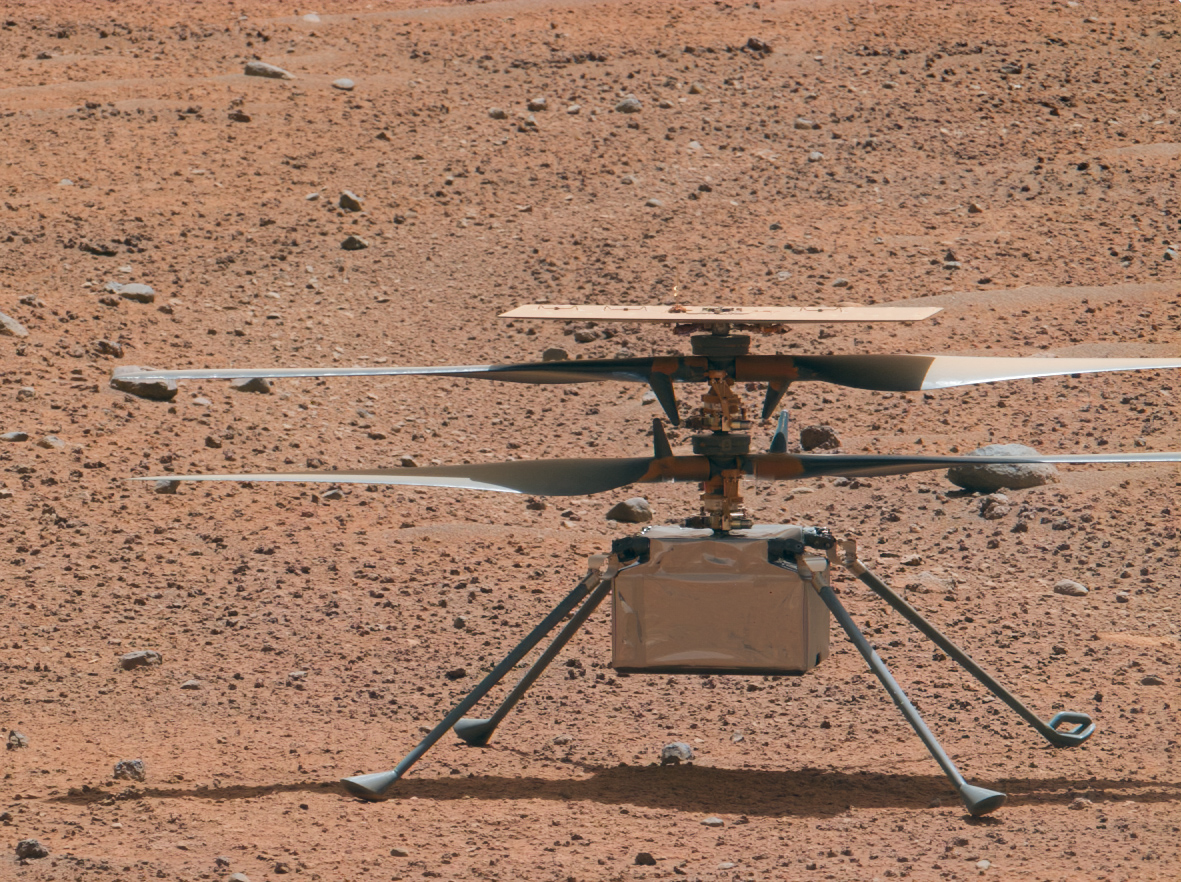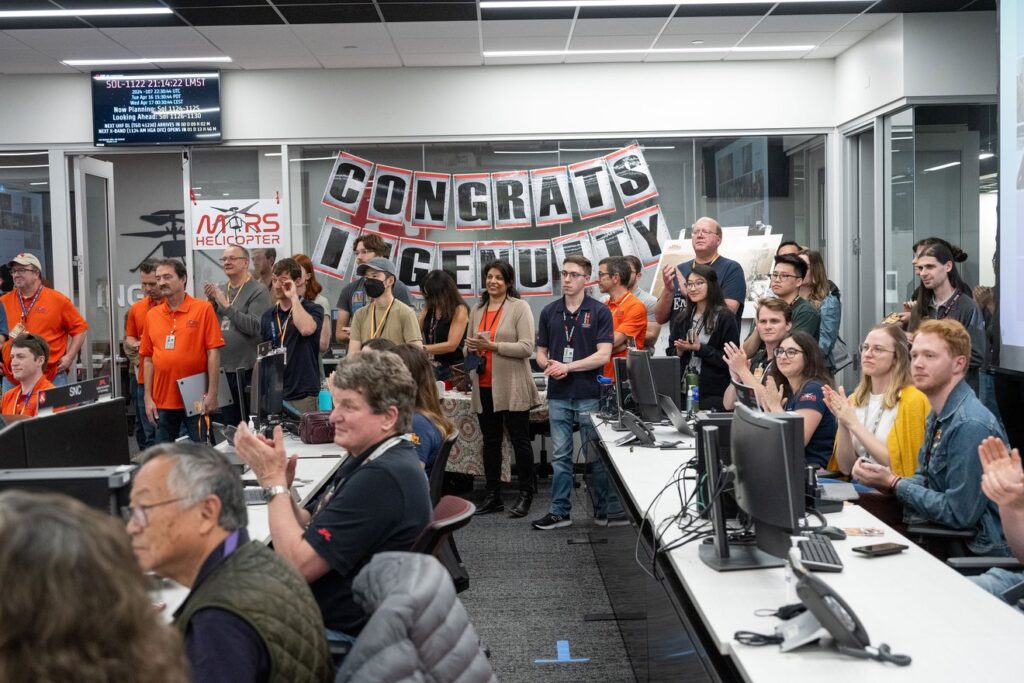The Ingenuity helicopter has sent its last message to Earth. Now the vehicle will function as an autonomous research station and collect data that may be useful to scientists in the future.
First Martian helicopter
Ingenuity was unloaded onto the Martian surface by the Perseverance rover in April 2021. The spacecraft was a demonstrator. Its main task was to test the possibility of studying the Red Planet using heavier-than-air vehicles.

The Martian helicopter coped brilliantly with this task. Formally, it was designed for five flights and 30 days of operation. In reality, Ingenuity spent almost three years on Mars and made 72 flights, during which it flew about 17 km.
Unfortunately, during its 72nd flight, the drone made a hard landing. It led to the fact that the vehicle seriously damaged the blades of its propeller and lost the ability to fly.
Farewell to Ingenuity
Despite the accident, the rover retained the ability to communicate with Earth through the Perseverance used as a repeater. However, during its mission, the rover gradually moved away from Ingenuity. So it was only a matter of time before the drone lost the ability to keep in touch.

Therefore, the mission specialists decided to prepare in advance for the farewell to Ingenuity. On April 16, the mission team gathered for the last time in the control room of the Jet Propulsion Laboratory (JPL). On that day, Ingenuity sent its final message to Earth.
The vehicle confirmed in it that the software update previously downloaded to it was working successfully. In addition to telemetry, it also contained the names of people who worked on the mission (they were transmitted to the drone a day earlier by JPL controllers).
The last task of Ingenuity
Ingenuity will now begin the final stage of its mission. It will function as an autonomous research station.
Ingenuity will wake up daily, activate on-board computers and check the operation of solar panels, batteries and electronic equipment. In addition, the helicopter will take pictures of the surface using a color camera and collect temperature data from sensors located on its body.
Of course, at some stage, some important electronic component will either fail on the vehicle or so much dust will accumulate on its solar panels that it will lose the ability to continue working. But before that, Ingenuity may have time to collect a lot of data. According to the team’s calculations, Ingenuity’s memory will last for 20 years of operation in this mode.
The mission staff hopes that in the future another mission (or even a manned expedition) will land in the area, find Ingenuity and extract its memory. The data stored inside it can not only benefit developers of Martian technology, but also allow scientists to gain a long-term understanding of Martian weather conditions and dust movement.
According to https://www.jpl.nasa.gov
Follow us on Twitter to get the most interesting space news in time
https://twitter.com/ust_magazine


